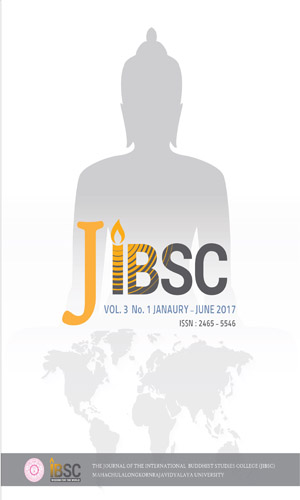DIFFERENT IDEAS OF BODHISATTVA CHARACTERISTICS
Main Article Content
Abstract
This article attempts to make a fuller understanding of characteristics of bodhisattvahood that exist in both Theravāda and Mahāyāna Buddhism. Different points of view concerning a Bodhisattva’s characteristics in the Sutta Nikāya and the commentary of both schools present two different interpretations of characteristics between both schools. Theravāda Canonical texts hold an idea of a bodhisattva as a wise being who is concerned with awakening or obtaining the confi rmation from the Buddha’s mouth that he is an unenlightened bodhisattva. In contrast, Mahāyāna tradition explains the bodhisattva as a being with perfect knowledge and will be a future Buddha. He walks along the path of enlightenment by way of attaining Buddhahood through practicing the pāramitās (perfections), but he chooses to postpone his enlightenment and stay in this world to save all sentient beings. This represents the different ideas of a bodhisattva’s characteristics between both schools. In fact, doctrine is the same since it is based on the Buddha’s teaching but differences were created by the Theravāda and Mahāyāna schools. The way of a Bodhisattva attaining Buddhahood is to perfectly fulfi ll the pāramitās (perfections).
Article Details
The Journal of TCI is licensed under a Creative Commons Attribution-NonCommercial-NoDerivatives 4.0 International (CC BY-NC-ND 4.0) licence unless otherwise stated. Please read our Policies page for more information on Open Access, copyright and permissions.


